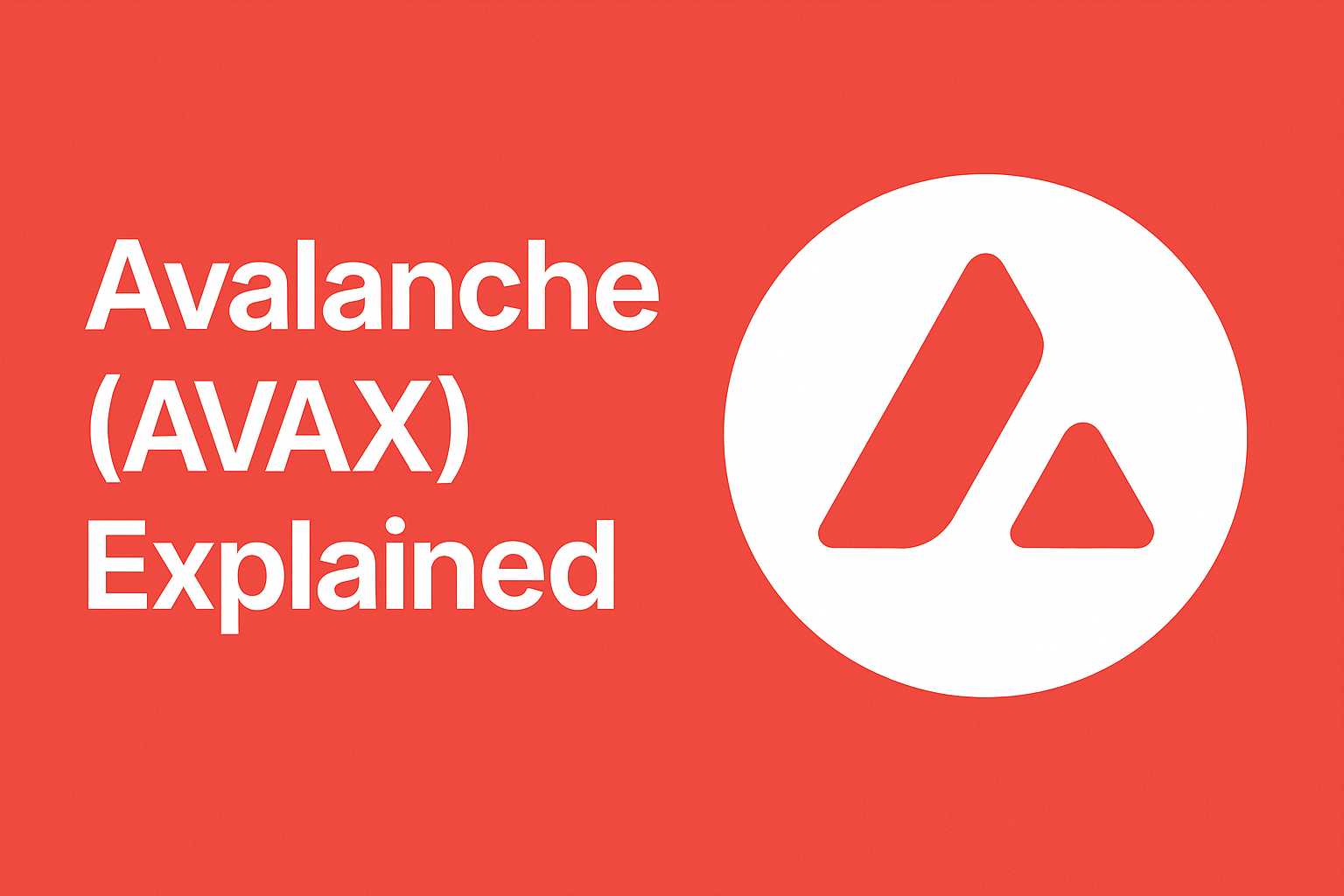Avalanche is like the race car of blockchains—fast, slick, and built to handle serious traffic. Since its launch in 2020, it has been grabbing attention in the crypto world by solving one of blockchain’s oldest headaches: how to be fast, secure, and decentralized all at once.
Let’s break it all down without turning it into a tech lecture.
Meet Avalanche: Not Just One Chain, But Three
Most blockchains are one big highway. Avalanche is a whole freeway system with three separate lanes, each designed for a different kind of traffic.
🟦 X-Chain (Exchange Chain)
This is where you create and trade digital assets—like tokens or NFTs. It’s fast and cheap, which is perfect if you’re swapping things around all day.
🟥 P-Chain (Platform Chain)
Think of this as the brain of the network. It tracks who’s keeping the network running (validators), and it’s where you can spin up your own mini blockchain called a subnet. You get to make the rules.
🟩 C-Chain (Contract Chain)
This is where smart contracts live—aka the stuff that powers decentralized apps (dApps). It works just like Ethereum, so devs can easily move their Ethereum apps over to Avalanche without rewriting a bunch of code.
TL;DR:
Instead of cramming everything into one chain, Avalanche splits the load across three, making everything smoother and more scalable.
What Makes Avalanche So Fast?
Avalanche ditched the old-school blockchain rules and built its own consensus system (how the network agrees on what’s true). It’s called the Snow family of protocols—and it’s actually kind of brilliant.
Here’s how it works in simple terms:
- A validator sees a new transaction.
- It quickly checks in with a few other validators.
- If most agree, it leans toward saying “yes.”
- Do that a few times, and boom—consensus.
It’s kind of like taking a group poll at lightning speed.
The Payoff:
- Finality in <1 second (No more waiting for 20 confirmations).
- Thousands of transactions per second.
- Scales to millions of validators without choking.
- Very resistant to spam and attacks.
AVAX: The Fuel That Runs the Avalanche Engine
AVAX is Avalanche’s native token, and it does a lot of heavy lifting:
- Transaction fees – Every time you use the network, you pay in AVAX.
- Staking – Validators have to lock up AVAX to help secure the network. In return, they earn rewards.
- Governance (coming soon) – Token holders will eventually get to vote on how the network evolves.
Fun fact: When you pay transaction fees, those tokens get burned. That means they’re gone forever—which could make AVAX more valuable over time.
Subnets: Build Your Own Blockchain (No Degree Required)
Here’s where Avalanche really stands out: subnets.
A subnet is your own private blockchain built on Avalanche. You get to decide how it works:
- Want it to be invite-only? Go for it.
- Need a custom economy? Easy.
- Want your own virtual machine? Done.
Each subnet runs independently, so if one is overloaded or buggy, it doesn’t crash the rest of the system.
Who’s Using Subnets?
- Game developers who need crazy-fast transactions.
- Finance apps that need to follow strict regulations.
- DeFi platforms looking for more flexibility.
The Avalanche Ecosystem: What’s Actually Built on It?
Avalanche isn’t just hype—it’s got a growing lineup of real apps and use cases:
💰 DeFi
Big names like Aave, Benqi, and Trader Joe live here. You can lend, borrow, swap, and farm.
🎨 NFTs
Thanks to Ethereum compatibility, Avalanche is home to NFT platforms where artists and collectors can mint and trade digital art.
🎮 Blockchain Games
Games need fast, cheap transactions—and Avalanche delivers. Many use their own subnets for speed and customization.
🏢 Enterprises & Institutions
With custom subnets and regulatory flexibility, businesses can build on Avalanche without sacrificing compliance.
Why People Like Avalanche
- It’s FAST. Transactions take less than a second.
- It’s CHEAP. Say goodbye to $50 gas fees.
- It SCALES. Subnets help avoid network congestion.
- It’s FLEXIBLE. Build whatever you want, however you want.
- It’s GREEN. Way more energy-efficient than proof-of-work blockchains like Bitcoin.
But It’s Not All Perfect…
Let’s keep it real—Avalanche has its challenges:
- Validator entry is expensive. You need 2,000 AVAX to run a validator node.
- It’s complex. The multi-chain setup can be confusing for newcomers.
- It’s still young. The ecosystem isn’t as big as Ethereum’s—yet.
- Subnets need their own security. Each subnet is responsible for protecting itself.
The Brains Behind It: Ava Labs
Avalanche was created by Ava Labs, led by Emin Gün Sirer, a respected computer science professor from Cornell. With help from PhDs and blockchain pros, they built Avalanche from scratch—no copy-paste here.
What’s Next for Avalanche?
Avalanche is not slowing down. Here’s what’s coming:
- More subnets (and better ways to connect them).
- Real-world assets (like stocks or real estate) are getting tokenized.
- More developers and apps are jumping in.
- Better governance powered by AVAX holders.
Final Thoughts
Avalanche is kind of like a next-gen blockchain superhighway. It’s fast, scalable, and flexible enough for just about anything—from trading and gaming to building your chain from scratch.
If Ethereum is the old smartphone, Avalanche is the new one that charges faster, runs smoother, and doesn’t freeze up when you open too many apps.
Just keep in mind: It’s still growing, it’s still competing, and it’s not without risks. But if it keeps this pace, Avalanche could become one of the key platforms powering the future of Web3.


















Leave a Reply